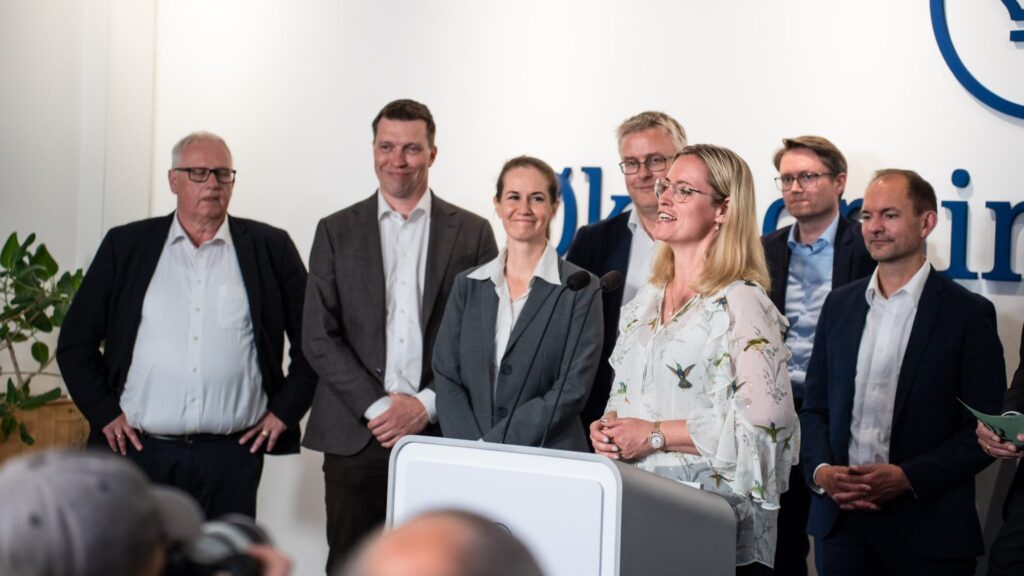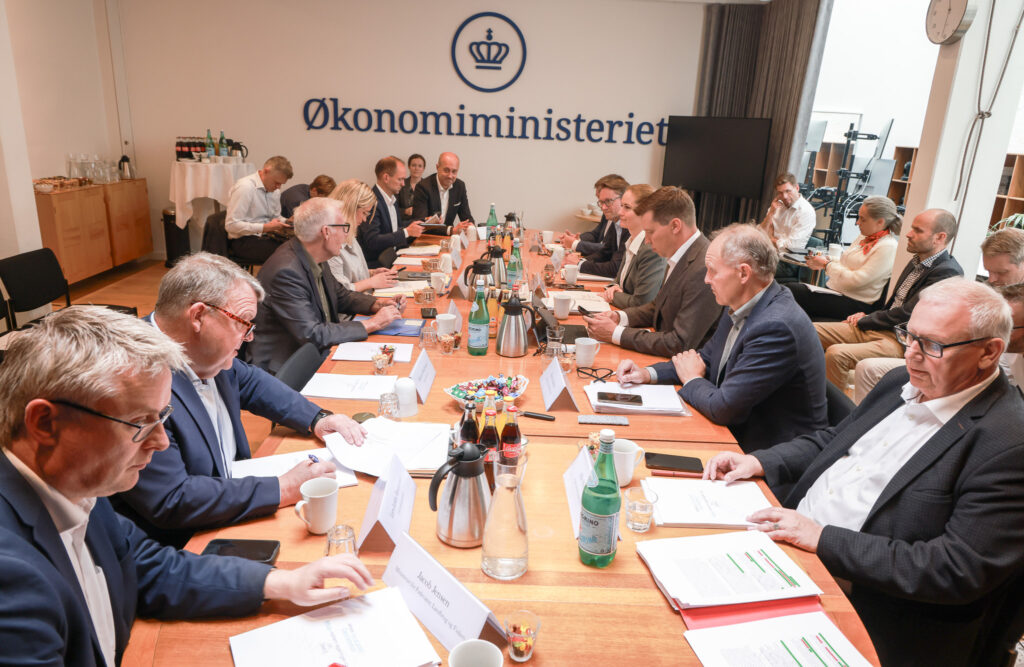Denmark to Impose World’s First Carbon Tax on Agriculture, With Each Cow Costing $100 Per Year
7 Mins Read
Denmark will introduce a tax on carbon emissions from agriculture later this year to meet its climate goals, becoming the first country to do so.
Farmers will need to shell out $100 per year for the greenhouse gas emissions from each of their cows, thanks to Denmark’s upcoming carbon tax on livestock and agricultural production.
The first country to agree to such a levy, the move is aimed at helping Denmark meet its climate goals of reducing emissions by 70% by the end of the decade (from 1990 levels). Agriculture is the Nordic nation’s largest source of emissions, making up 22.4% of its climate footprint.
The unprecedented move is the result of five months of negotiations with farming and environmental groups, and will usher in a “historic reorganisation and restructuring of Denmark’s land and food production”, economic affairs minister Stephanie Lose wrote on X (formerly Twitter).
Denmark’s centrist ruling coalition agreed to the tax on Monday with the Green tripartite, an association between the government and trade groups that had been discussing the carbon tax since February.
It means that farmers will be taxed 300 Danish kroner ($43) per tonne of CO2e from livestock in 2030, increasing to 750 kroner ($108) in 2035. But farmers will be entitled to an income tax deduction of 60%, so the actual levy per tonne will be 120 kroner ($17) initially, increasing to 300 five years later.
The bill – essentially a meat and dairy tax – is now subject to approval from the parliament, but is expected to pass following the summer holidays. It will be accompanied by an investment of 40 billion kroner ($5.7B) aimed at facilitating the green transition. “With the agreement, we will reach our climate goals in 2030, and we will take a big step closer to becoming climate-neutral in 2045,” said tax minister Jeppe Bruus.
“We will be the first country in the world to introduce a real CO2e tax on agriculture. Other countries will be inspired by it,” he added.
Denmark launches green fund to support transition

Denmark is a pork and dairy export giant, but these products have a sizeable impact on the climate. The emissions from beef consumption alone, meanwhile, make up 45% of its emissions reduction target.
This is why the Green tripartite – comprising the Danish Agriculture and Food Council, the Danish Society for Nature Conservation, the Danish Food Federation, the Danish Metal Workers’ Association, and the Confederation of Danish Industry, and municipal governments – began designing the carbon tax. Initially, three tax models were proposed, ranging from 125 to 750 kroner.
The committee told the parliament that the higher levy would be the most effective way to curb agricultural emissions, but ultimately, the aforementioned tax rate of 120 kroner per tonne of CO2e was agreed upon for 2030.
“It is crucial that we implement the green transition of the agricultural sector in a way that ensures that we have a competitive food industry in the future, with business potential and job opportunities,” Lose previously told Green Queen. “Denmark must set an example and show the world how an economically sustainable green transition of the agricultural sector can be successfully carried out.”
The carbon tax has built-in incentives for farmers to reduce emissions. At current rates, without intervention, Denmark’s agricultural sector will account for 46% of its emissions by the end of the decade. But the tax is estimated to reduce emissions by at least 1.8 million tonnes (and potentially up to 2.6 million) in 2030 alone, bridging the gap for its emissions target.
Torsten Hasforth, chief economist at Danish green think tank Concito, said there were two reasons behind introducing the tax only in 2030. “The primary reason is that it requires a major administrative apparatus (tax systems, etc.) to be set up,” he told Green Queen. “A secondary concern is of course to allow farmers to prepare and adjust to the coming tax.”
To help farmers transition towards low-emission production, the government has set up a Green Land Fund. This will funnel 30 billion kroner ($4.3B) into reforesting 250,000 hectares of farmland by 2045, extract 140,000 hectares of lowland by 2030, and acquire certain farms in order to reduce nitrogen emissions and make at least 20% of its nature protected. Another 10 billion kroner ($1.4B) will go towards the storage of biochar produced by pyrolysis until 2045.
“We are investing billions in the largest transformation of the Danish landscape in recent times,” said foreign minister Lars Løkke Rasmussen. “We are creating much more nature, a cleaner water environment, establishing many more forests, and making it possible to develop agriculture for the green competition of the future.”
Farmer reaction generally positive

Hasforth expressed hope that the law would “start the process of transforming the sector in a climate-neutral direction by creating an incentive to developing new solutions, something which the agricultural sector has been sorely lacking”.
The carbon tax had raised fears about its impact on cattle and livestock farmers, with concerns over a loss of jobs owing to lower production volumes. But while there will be an adjustment, Hasforth doesn’t expect this to lead to mass unemployment.
“The calculated loss of jobs according to the economic models is 1,500 out of 45,000 employed in the agricultural sector, but this is compensated by a rise of 900 in forestry, where funds are diverted to,” he explained. “In a strong economy such as the Danish economy, it is expected that the rest of the job losses will be absorbed into other sectors.”
According to his think tank’s calculations, the average cow in Denmark produces six tonnes of CO2e per year. This means that the 2030 tax rate would mean cattle farmers end up paying 720 kroner ($103) for their herd’s emissions, and this will rise to 1800 kroner ($258) in 2035.
To circumvent this, the Danish government will return proceeds from the livestock tax to a transition support pool to support the shift to low-emission farming in 2030-31. This will be revisited in 2032.
Meanwhile, consumers are also expected to pay an extra two kroner (30 cents) per kg of beef in 2030. This could encourage Danes – who eat three times more meat than recommended by the latest dietary guidelines recommend (350g per week) – to reduce their consumption of animal products.
An EU-wide survey last year revealed that two-thirds of Danish consumers eat meat, but while 48% had reduced their meat consumption over the previous year, this was the lowest among the 10 countries covered in the report.
However, more than six in 10 Danes said they’d support campaigns to reduce meat and dairy consumption, and that reducing taxes on low-emission foods is a good idea. Meanwhile, around half said they support a farmer transition towards plant-based food (54%) and are happy to see meat and dairy subsidies reduced (48%).
Denmark will aim to bring in more party support for carbon tax

The Danish tax comes the same month New Zealand scrapped plans to introduce a similar livestock levy after criticism from farmers, pushing any deliberation back to at least 2030. But the reaction from farmers in the Nordic country has generally been positive, according to Hasforth.
“The main agricultural association has been part of negotiations. This has of course given a great legitimacy to the result,” he stated. “The immediate response by most farmers has been positive. Most of the previous concern has of course tied to uncertainty, which has now been dispelled.”
Denmark’s finance minister, Nicolai Wammen, said the tax laid the foundation for what the country would look like “five, 10 and 20 years from now”. “We know that a CO2 tax model aligned across all sectors gives us the lowest societal costs in total. What we have now done from industry sectors to agriculture shows us that an ambitious green transition is possible,” he said.
So what happens next? “The agreement now enters into a political process, where it is submitted to the other parties of parliament. The government, of course, has a majority in parliament, but they will definitely try to get more political parties to join a political agreement underpinning the deal,” explained Hasforth.
“This will ensure its longevity. This process is unlikely to change the initial agreement significantly as it’s an intricate compromise, which the government has no interest in seeing it unravel,” he added.
Denmark embarked on another first last year when it introduced a national action plan to transition towards a plant-based food system. The strategy includes training chefs in both public and private kitchens on the preparation of vegan meals, a greater focus on plant-based diets in the education sector, expanding exports of locally produced vegan food, and investing more in R&D for this industry.



